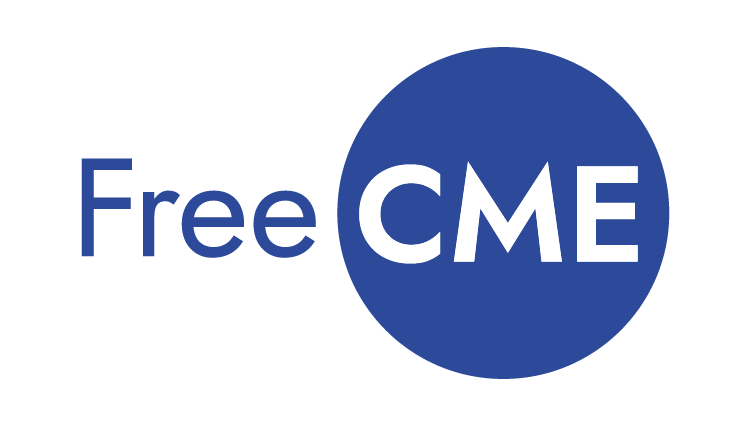
Acromegaly: An Interactive Discussion with 3 Physician Experts
Released On
May 20, 2025
Expires On
May 20, 2026
Media Type
Internet
Completion Time
60 minutes
Specialty
Endocrinology, Radiation Oncology, Otolaryngology, Radiology, Surgery
Topic(s)
Acromegaly, Oncology, Radiology, Surgery
This activity is provided by EXCEL Continuing Education

This activity is supported by an educational grant from CRINETICS PHARMACEUTICALS, CHIESI USA and CAMURUS.
Credit Available
- Physicians — maximum of 1 AMA PRA Category 1 Credit™
- Nurses — 1 Nursing Contact Hour
All other healthcare professionals completing this course will be issued a statement of participation.
Target Audience
This activity is designed to meet the educational needs of endocrinologists, neurosurgeons, otolaryngological surgeons, radiation oncologists, radiologists, and other clinicians including allied healthcare practitioners who wish to improve their knowledge and competence regarding the treatment and management of acromegaly.
Program Overview
Acromegaly is a rare, chronic, progressive disease characterized by an excess secretion of growth hormone (GH) and increased circulating insulin-like growth factor 1 (IGF-1) concentrations. It is caused, in most cases, by pituitary adenomas that interfere with normal pituitary function. The clinical diagnosis, based on symptoms related to GH excess, is often delayed due to the gradual and subtle nature of the disease. Consequently, patients often have established systemic complications at diagnosis with increased morbidity and premature mortality.
Our three acromegaly KOLs will discuss patient cases covering the consequences of a delayed diagnosis including strategies for a proper evaluation to avoid a misdiagnosis, address management strategies that can impact overall patient outcomes, and provide an in-depth look at the latest clinical evidence in the acromegaly treatment landscape.
Learning Objectives
Upon completion of this activity, participants should be better able to:
- Describe the clinical burden of acromegaly on patient quality of life including long-term complications and comorbidities
- Apply clinical evidence, algorithms, consensus statements, to diagnose and treat acromegaly
- Using patient cases, discuss how differences in individualizing management strategies and treatment approaches can result in positive patient outcomes
- Discuss novel and emerging treatments and how these can be integrated into clinical practice
Faculty

Lisa B. Nachtigall, MD
Associate Professor of Medicine at Harvard Medical School
Clinical Director
Neuroendocrine & Pituitary Tumor Clinical Center
Massachusetts General Hospital - Boston, MA

Kevin C.J. Yuen, MD
Medical Director
Barrow Pituitary Center
Barrow Neuroendocrinology Clinic
University of Arizona College of Medicine - Phoenix, AZ

Adriana Ioachimescu, MD, PhD
Director of the Pituitary and Adrenal Disease Program
Professor of the Department of Medicine
Division of Endocrinology and Molecular Medicine
Medical College of Wisconsin - Milwaukee, WI
Accreditation Statement
EXCEL Continuing Education is accredited by the Accreditation Council for Continuing Medical Education to provide continuing medical education for physicians.
Canadian CME: Through an agreement between the ACCME and the Royal College of Physicians and Surgeons of Canada, medical practitioners participating in the Royal College MOC Program may record completion of accredited activities registered under the ACCME’s “CME in Support of MOC” program in Section 3 of the Royal College’s MOC Program.
The UEMS-EACCME® = The American Medical Association (AMA) has an agreement of mutual recognition of CME credit with the UEMS. Under the terms of this agreement, the European Accreditation Council for Continuing Medical Education (EACCME), the accrediting arm of the UEMS, will convert CME credit for live and enduring activities certified by the AMA.
Physician Assistants and Nurse Practitioners: The National Commission on Certification of Physician Assistants (NCCPA) and the American Academy of Nurse Practitioners (AANP) accept AMA PRA Category 1 Credit™ from organizations accredited by ACCME through its reciprocity agreements.
Physician Credit Designation
EXCEL Continuing Education designates this enduring activity for a maximum of 1 AMA PRA Category 1 Credit™. Physicians should claim only the credit commensurate with the extent of their participation in the activity.
Nurse Credit Designation
EXCEL Continuing Education is accredited by the Florida Board of Nursing, provider # 50-619, and designates this activity for 1 nursing contact hour.
Disclosures of Conflicts of Interest
Dr. Lisa Nachtigall is a consultant and has received grant funds from Chiesi and Recordati Rare Diseases. She has also received consulting fees from Crinetics.
Dr. Adriana Ioachimescu has received consulting fees from Xeris, Crinetics, and Camurus. Recordati Rare Diseases has provided research funds payable to her institution.
Dr. Kevin Yuen has received research grants from Ascendis and Novo Nordisk. He is an Advisory Board Member for Ascendis, Novo Nordisk, Chiesi, Crinetics, and Recordati Rare Diseases.
EXCEL staff and the Peer Reviewer have no financial information to disclose.
Instructions for Participation and Credit
There are no fees for participating and receiving CME credit for this enduring activity. To receive CME credit participants must:
- Read the CME/CE information and faculty disclosures
- Participate in the online activity
- Submit the evaluation form
Certificates will be immediately available to the participant.
Course Viewing Requirements
Supported Browsers
Internet Explorer 8.0+ for Windows 2003, Vista, XP, Windows 7, Windows 8.1 and above
Google Chrome 28.0+ for Windows, Mac OS, or Linux
Mozilla Firefox 23.0+ for Windows, Mac OS, or Linux
Safari 6.0+ for Mac OSX 10.7 and above
Supported Phones & Tablets
Android 4.0.3 and above
iPhone/iPad with iOS 6.1 or above
Disclosure of Unlabeled Use
EXCEL Continuing Education requires that faculty participating in any CME activity disclose to the audience when discussing any unlabeled or investigational use of any commercial product or device not yet approved for use in the United States.
Disclaimer
This activity is designed for educational purposes. Participants have a responsibility to utilize this information to enhance their professional development to improve patient outcomes. Conclusions drawn by the participants should be derived from careful consideration of all available scientific information. The participant should use his/her clinical judgment, knowledge, experience, and diagnostic decision-making before applying any information, whether provided here or by others, for any professional use.
Contact Information
For CME questions, please contact: [email protected]
